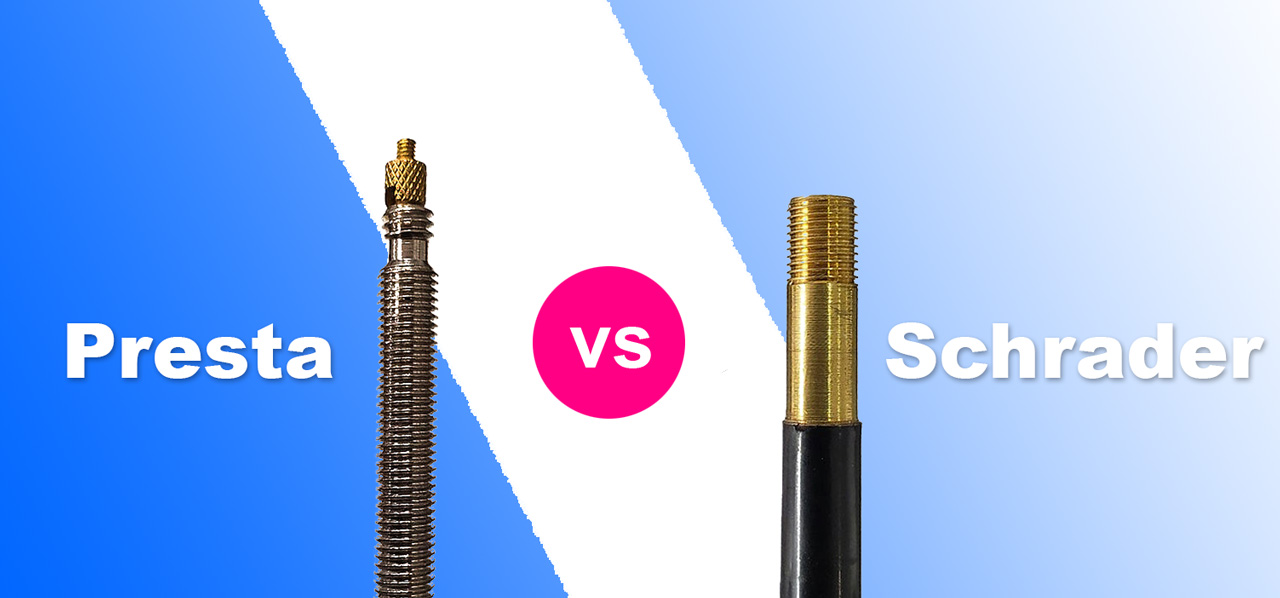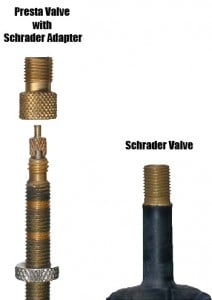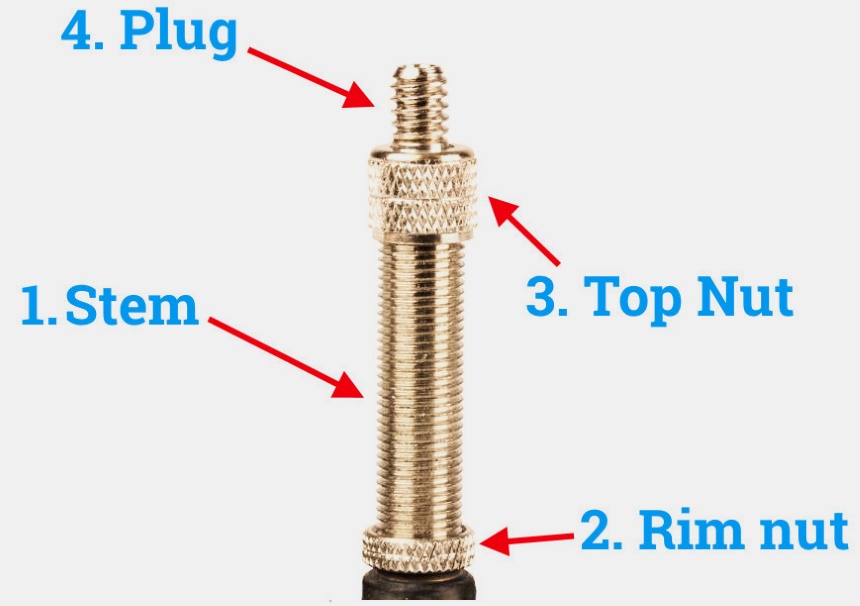Understanding the Basics: What are Presta and Schrader Valves?
When it comes to inflating bicycle tires, two main types of valves are predominantly used: Presta and Schrader. While both serve the same primary function, they differ in several key aspects, such as design, compatibility, ease of use, durability, and maintenance. This comprehensive comparison of Presta valve vs Schrader valves aims to provide a thorough understanding of these differences, enabling cyclists to make informed decisions when selecting the best valve type for their specific needs and applications.
Presta Valves: An In-Depth Look
Presta valves, also known as French valves, are characterized by their slender design and sophisticated construction. The primary advantages of Presta valves include their compatibility with high-pressure tires and the ability to finely control air pressure during inflation. These valves are commonly found on high-performance bicycles, such as road and racing bikes, where tire pressure plays a critical role in overall performance and efficiency.
One notable feature of Presta valves is their smaller diameter, which allows for a more secure seal and reduces the risk of air leakage. Additionally, Presta valves have a removable core, enabling users to fine-tune air pressure and even use the valve for other purposes, such as attaching a CO2 inflator for quick tire inflation. However, the delicate nature of Presta valves means they require a specialized pump or adapter for inflation, and they can be more prone to damage due to their intricate construction.
Schrader Valves: A Closer Examination
Schrader valves, also known as American valves, are characterized by their wider diameter and simple, robust construction. These valves are commonly found on lower-pressure tires, such as those used on mountain bikes, hybrid bikes, and children’s bikes. One of the primary advantages of Schrader valves is their compatibility with a wide range of pumps, including standard automotive air pumps, making them a convenient choice for many cyclists.
Schrader valves are generally more robust and resistant to damage compared to Presta valves, thanks to their sturdy construction and larger size. However, they may not provide the same level of precision when inflating high-pressure tires, as they lack the fine air pressure control found in Presta valves. Schrader valves are also more difficult to puncture or damage due to their wider diameter and stronger materials, making them a popular choice for off-road and recreational cyclists.
Presta vs Schrader: Compatibility and Adaptability
When it comes to compatibility and adaptability, both Presta and Schrader valves have their advantages and limitations. While it is possible to use adapters or converters to inflate tires with a different valve type, it is essential to check tire compatibility before attempting to use an adapter, as not all tires and rims are suitable for conversion.
Presta-to-Schrader adapters are commonly available and can be attached to the Presta valve to allow inflation using a Schrader-compatible pump. However, using an adapter may introduce additional connections and potential leakage points, which could negatively impact inflation efficiency and pressure maintenance. Conversely, Schrader-to-Presta adapters are less common and may not provide a reliable seal, making them less suitable for high-pressure tire applications.
In some cases, it may be more convenient to invest in a dual-compatible pump, which can accommodate both Presta and Schrader valves without the need for an adapter. These pumps typically include a reversible chuck or interchangeable attachments, allowing for seamless inflation of tires with either valve type.
Ease of Use: Presta Valves vs Schrader Valves
Ease of use is an essential factor when comparing Presta and Schrader valves. Here, we will examine the time and effort required to inflate tires, the availability of compatible pumps, and the learning curve associated with each valve type. Additionally, we will provide tips and tricks for using each valve type efficiently and effectively.
Inflating Tires
Schrader valves, with their wider diameter and simple construction, are generally easier to inflate than Presta valves. They can be inflated using a standard automotive air pump, which is widely available and convenient. In contrast, Presta valves require a specialized pump or adapter, which may not be as readily available, particularly in public places or gas stations.
Learning Curve
Presta valves have a slightly steeper learning curve due to their delicate construction and the need for a specialized pump or adapter. However, with practice and familiarity, using Presta valves can become second nature. Schrader valves, on the other hand, are relatively straightforward and intuitive to use, making them a popular choice for many cyclists.
Tips and Tricks
- Presta Valves: When using a Presta valve, ensure that the valve core is open before attempting to inflate the tire. To open the core, unscrew the small nut at the top of the valve. After inflation, tighten the nut to close the core and maintain tire pressure.
- Schrader Valves: When using a Schrader valve, be mindful of the valve’s position during inflation. If the valve is not aligned correctly, it may leak air or become damaged. Additionally, ensure that the valve is securely fastened to the rim to prevent leaks and maintain tire pressure.
Durability and Maintenance: Presta Valves vs Schrader Valves
When comparing Presta and Schrader valves, durability and maintenance are crucial factors to consider. Understanding the differences between these two valve types can help cyclists make informed decisions and prolong the lifespan of their bicycle tires.
Resistance to Damage
Schrader valves are generally more robust and resistant to damage due to their wider diameter and simple construction. They are less likely to become clogged with dirt or debris, making them a reliable choice for off-road and recreational cyclists. In contrast, Presta valves are more delicate and can be more prone to damage due to their slimmer design and more intricate construction.
Ease of Replacement
Replacing a damaged or worn-out valve is relatively straightforward for both Presta and Schrader valves. Schrader valves can often be found at auto parts stores, while Presta valves are more commonly available at bicycle shops. When replacing a valve, ensure that the new valve is compatible with the tire and rim dimensions, as well as the desired pressure range.
Frequency of Required Maintenance
Both Presta and Schrader valves require regular maintenance to ensure optimal performance and longevity. Routinely checking tire pressure, cleaning the valve area, and ensuring that the valve core is tightly secured can help prevent leaks and maintain tire pressure. Additionally, inspecting the valve for signs of wear, damage, or corrosion can help identify potential issues before they become more serious.
Prolonging Lifespan and Minimizing Damage
- Presta Valves: To prolong the lifespan of Presta valves, handle them with care and avoid applying excessive force when opening or closing the valve core. When not in use, protect the valve with a valve cap or plug to prevent damage and maintain tire pressure.
- Schrader Valves: To minimize damage to Schrader valves, ensure that the valve is correctly aligned during inflation and that the pump chuck is securely fastened. Regularly inspect the valve for signs of wear or damage, and replace it if necessary to maintain tire pressure and performance.
Making an Informed Decision: Presta Valves vs Schrader Valves
When comparing Presta and Schrader valves, it is essential to consider several factors to make an informed decision. These factors include tire pressure, compatibility, ease of use, durability, and maintenance. By carefully evaluating these aspects, cyclists can choose the best valve type for their specific needs and applications.
Tire Pressure
Tire pressure is a critical factor to consider when selecting between Presta and Schrader valves. High-pressure tires, commonly used in road and racing bicycles, typically require Presta valves due to their ability to finely control air pressure. In contrast, Schrader valves are more commonly found on lower-pressure tires, such as those used in mountain bikes and hybrid bicycles.
Compatibility
Compatibility is another essential factor to consider when choosing between Presta and Schrader valves. While adapters and converters are available, it is crucial to check tire compatibility before attempting to use an adapter, as not all tires and rims are suitable for conversion. Additionally, consider the availability of compatible pumps and the potential for leaks or damage when using adapters.
Ease of Use
Ease of use is a significant consideration when comparing Presta and Schrader valves. Schrader valves, with their wider diameter and compatibility with standard automotive air pumps, are generally easier to inflate and use. Presta valves, on the other hand, require a specialized pump or adapter and may have a steeper learning curve for some cyclists.
Durability and Maintenance
Durability and maintenance are also critical factors when comparing Presta and Schrader valves. Schrader valves are generally more robust and resistant to damage, while Presta valves are more delicate and can be more prone to damage due to their slimmer design and more intricate construction. Regular maintenance, such as cleaning the valve area and checking tire pressure, can help ensure optimal performance and longevity for both valve types.
Making the Right Choice
Ultimately, the choice between Presta and Schrader valves depends on several factors, including the cyclist’s specific needs, preferences, and the type of bicycle they own. By carefully considering these factors, cyclists can choose the best valve type for their unique situation and enjoy a safer, more efficient, and more enjoyable riding experience.
Conclusion: Embracing the Differences between Presta and Schrader Valves
In the world of bicycle tire valves, Presta and Schrader each have their unique features, benefits, and drawbacks. By understanding these differences and carefully considering factors such as tire pressure, compatibility, ease of use, durability, and maintenance, cyclists can make informed decisions and choose the best valve type for their specific needs and applications.
Presta valves, with their slimmer design and compatibility with high-pressure tires, offer precision and control for road and racing cyclists. However, their delicate construction and the need for a specialized pump or adapter may present challenges for some users. On the other hand, Schrader valves, with their wider diameter and compatibility with lower-pressure tires, provide robustness and ease of use, making them a popular choice for mountain bikers and casual cyclists.
Ultimately, the choice between Presta and Schrader valves comes down to personal preference and the specific requirements of the cyclist and their bicycle. By embracing the differences between these two valve types and staying informed about their unique features, cyclists can ensure a safer, more efficient, and more enjoyable riding experience.
To learn more about bicycle tire valves and maintenance, consult additional resources such as bicycle manufacturer guidelines, online forums, and expert reviews. By sharing their own experiences and insights, cyclists can contribute to a broader understanding of these essential components and help others make informed decisions about their bicycle tires.






